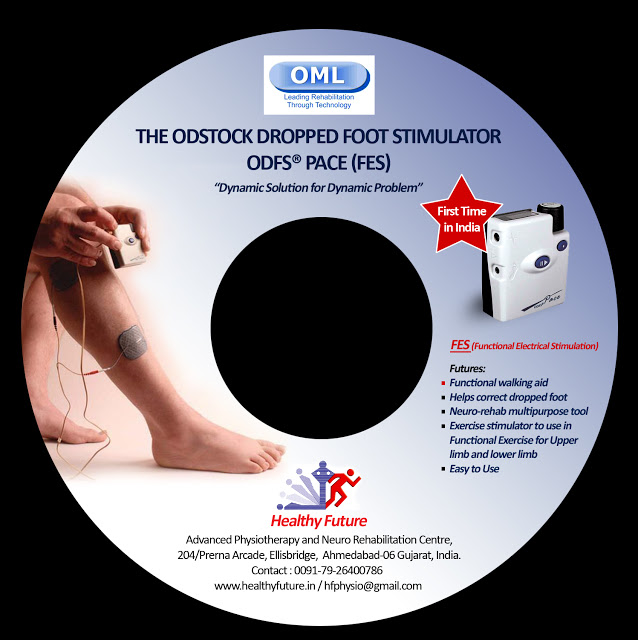54B, Tailstoi Town 5238 MT,
La city, IA 522364

Role of ODFS pace and Physiotherapy in early stage in Post-Stroke recovery
It has been always proven that ODFS pace is a very good clinical rehab tool. However, we can explore its versatile quality and use it effectively to improve gait pattern in very early stage of rehabilitation (flaccid or weak). It may even help to prevent post-stroke deficits like foot drop and hence avoid secondary changes in gait pattern e.g. circumduction.
It is also encourages to gain early weight-bearing and push off by allowing good step length. Having good step length encourages ilio-psoas facilitation by gaining effective stretch followed by flexion of hip rather circumduction and will also be supported well by dorsiflexion and hence good ground clearance. This is very much unlike foot drop splint which will fix the foot in dorsiflexion and would not give good reciprocal inhibition which is achieved by FES (ODFS pace).
We have to understand role of current (electrical stimulation) as it is primarily designed to gain functional desired movement rather excessive movement of ankle (in case of dorsiflexion). Current used in the device has many variables to fine tune the current to patient’s need and comfort. It includes symmetrical or asymmetrical biphasic current, amplitude from10ma to 100ma, frequency variable from 20hz to 60hz (variable unit of 5hz), pulse width variation from 3.6microsec to 360microsec (variable unit 1%). These are few of many unique features and functions of ODFS pace which allows smooth, pain less current induced movement. These variables when set appropriately avoids fatigue in muscles allowing endless work achieved by the muscles (e.g. walking for hours).
Here is an example of patient who suffered from massive hemorrhage and presented to us in flaccid stage of rehabilitation at our center.
We started early weight bearing; which always is considered best to relearn and improve walking ability. Initially we started training with AKBK brace along with FES or ES to gain ground clearance. After few days, he started gained good balance in his trunk and good with knee control. We then modified the support to FES or ES to Knee and AFO to ankle to gain same support. We were able to correct his gait pattern and able to reduce use of FES and AFO both. After a couple of weeks of practice he managed to walk independently without aid and was also able to manage stairs (up and down).
Using ODFS pace will not make someone to be dependent on it but help them to be independent with functional ability of particular desired task.
Leave A Comment